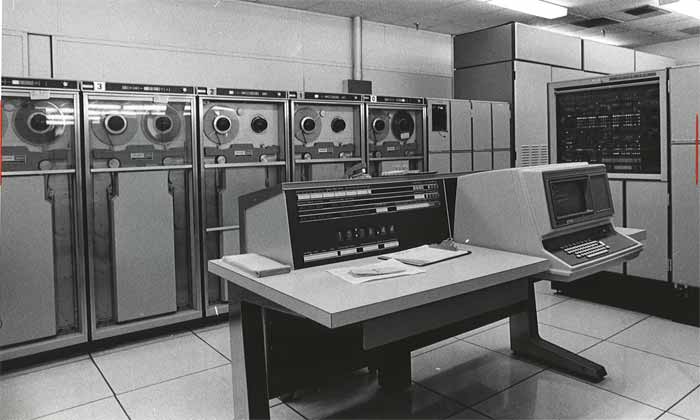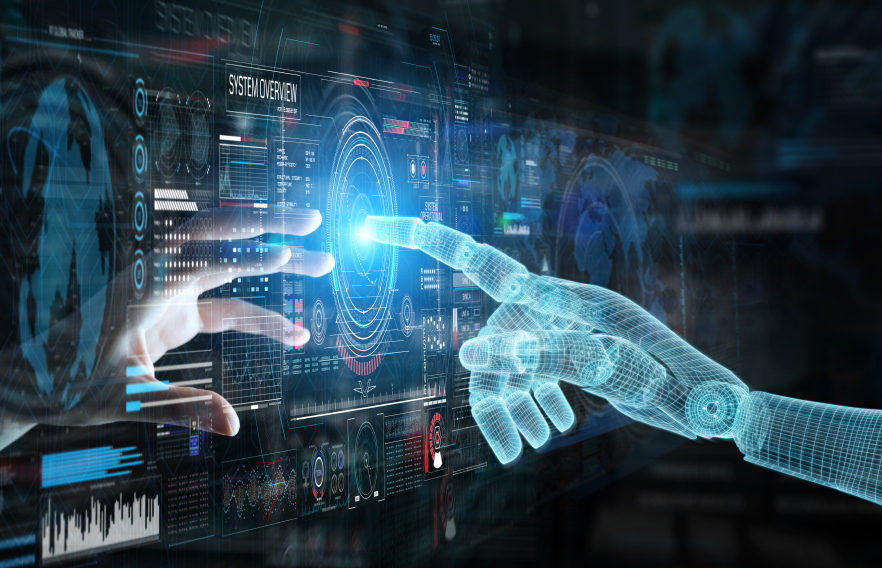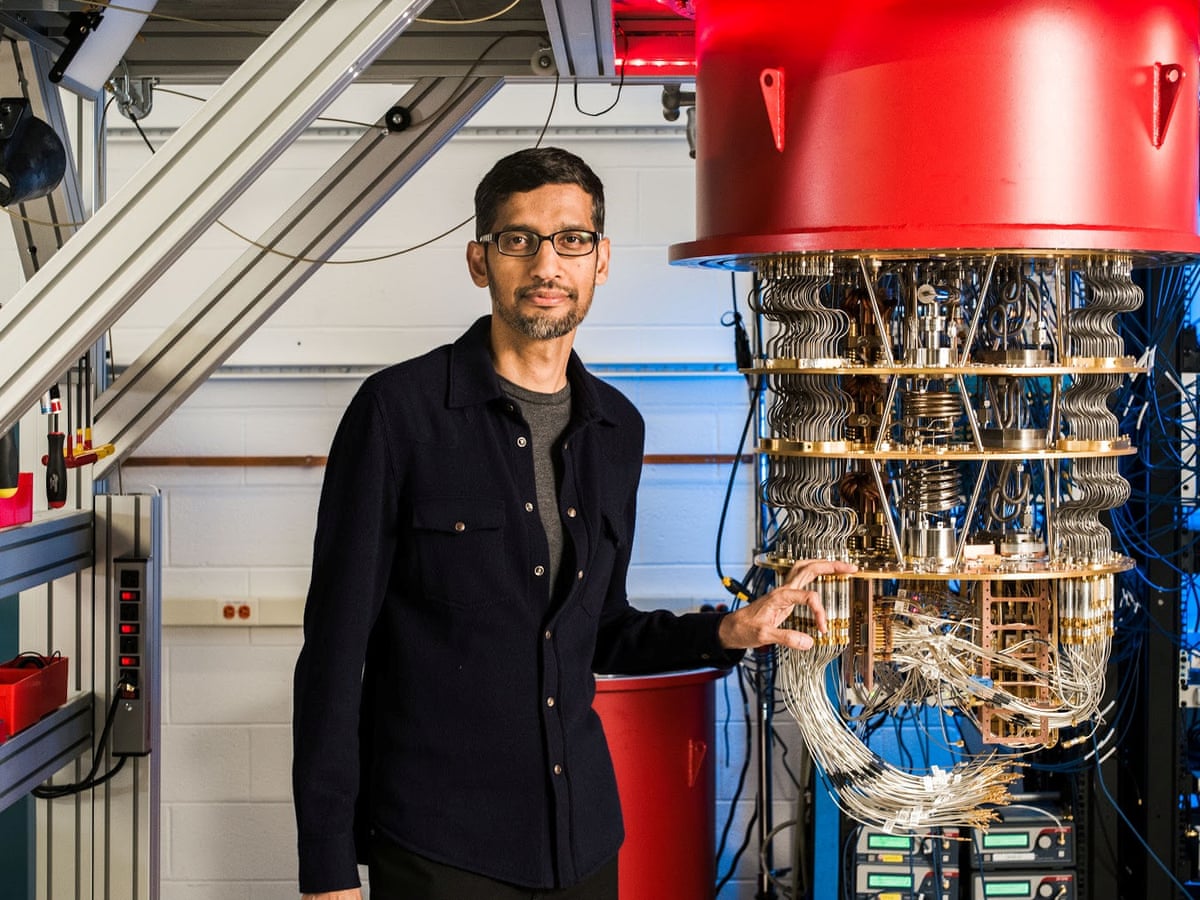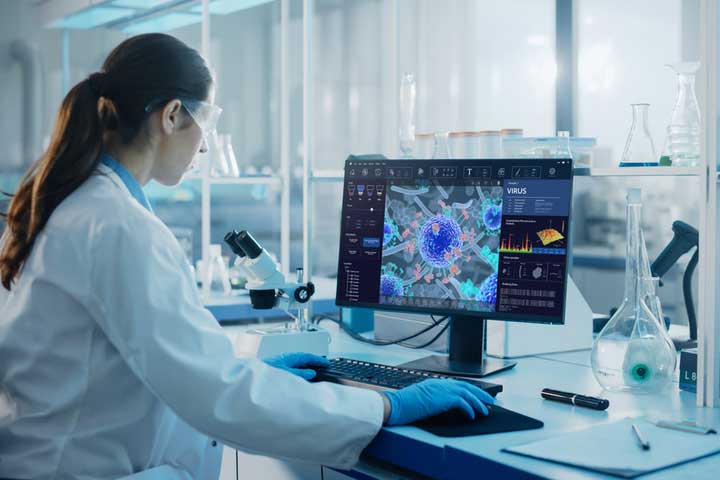History and Future of Computer Technology
History and Future of Computer Technology
Part 1: Navigating Through the History of Computer Generations

1.1 First Generation (1940s - 1950s)
The first generation of computers, characterized by the use of vacuum tubes, marked a monumental leap forward in human innovation. These early computers were marvels of engineering, but they were far from perfect. Vacuum tubes were prone to overheating and frequent failures, leading to significant downtime and maintenance challenges. Despite these limitations, the development of the ENIAC by John Mauchly and J. Presper Eckert at the University of Pennsylvania in 1946 paved the way for unprecedented computational capabilities. The ENIAC was designed to calculate artillery firing tables for the United States Army during World War II, a task that previously required months of manual calculations. Its introduction heralded a new era of computing, demonstrating the potential of electronic digital computers to revolutionize fields such as science, engineering, and cryptography.

First Generation Computers:
- ENIAC: Year Introduced: 1946, Key Features: Vacuum tube-based, programmable, decimal arithmetic, Notable Applications: Ballistic trajectory calculations for military purposes
- Mark I: Year Introduced: 1944, Key Features: Electro-mechanical, used punched card input, Notable Applications: Calculations for the Manhattan Project
- UNIVAC I: Year Introduced: 1951, Key Features: Commercially available, stored program architecture, Notable Applications: Business data processing, census calculations
1.2 Second Generation (1950s - 1960s)
The second generation of computers saw a monumental shift with the invention of the transistor. Developed by John Bardeen, Walter Brattain, and William Shockley at Bell Labs in 1947, transistors offered significant advantages over vacuum tubes. They were smaller, more reliable, and consumed less power, enabling the development of smaller and faster computers. One of the most iconic computers of this era was the IBM 1401, introduced in 1959. The IBM 1401 was widely used for business data processing and scientific calculations, helping to streamline operations and accelerate decision-making in industries ranging from banking to aerospace. The widespread adoption of transistor-based computers marked a turning point in the history of computing, paving the way for further advancements in the years to come.

Second Generation Computers:
- IBM 1401: Year Introduced: 1959, Key Features: Transistorized, magnetic core memory, punched card input/output, Notable Applications: Business data processing, scientific calculations
- UNIVAC II: Year Introduced: 1958, Key Features: Transistorized, improved speed and reliability, Notable Applications: Commercial data processing
- IBM 7090: Year Introduced: 1959, Key Features: Transistorized, high-speed floating-point arithmetic, Notable Applications: Scientific research, space exploration
1.3 Third Generation (1960s - 1970s)
The third generation of computers witnessed the advent of integrated circuits (ICs), which further revolutionized the field of computing. Developed by Jack Kilby at Texas Instruments and Robert Noyce at Fairchild Semiconductor in the late 1950s, ICs combined multiple electronic components onto a single semiconductor substrate, significantly reducing size and cost. One of the most notable computers of this era was the DEC PDP-11, introduced in 1970. The PDP-11 featured integrated circuits, multiprocessing support, and expandable architecture, making it ideal for scientific research and industrial control systems. The widespread adoption of ICs paved the way for the development of smaller, faster, and more affordable computers, democratizing access to computing power and driving innovation across industries.

Third Generation Computers:
- DEC PDP-11: Year Introduced: 1970, Key Features: Integrated circuits, multiprocessing support, expandable, Notable Applications: Scientific research, industrial control systems
- IBM System/360: Year Introduced: 1964, Key Features: Modular design, backward compatibility, supported multiple operating systems, Notable Applications: Business data processing, financial applications
- CDC 6600: Year Introduced: 1964, Key Features: Fastest computer of its time, vector processing architecture, Notable Applications: Scientific research, weather prediction
1.4 Fourth Generation (1970s - Present)
The fourth generation of computers marked the transition to microprocessors, paving the way for the personal computer revolution. Microprocessors, which integrated the CPU onto a single chip, dramatically reduced size, cost, and power consumption, making computing accessible to individuals and small businesses. One of the most iconic computers of this era was the Apple II, introduced by Apple Inc. in 1977. The Apple II featured a microprocessor-based architecture, color graphics, and expandable memory, making it ideal for home computing and educational purposes. The success of the Apple II inspired a wave of innovation in the personal computer industry, leading to the proliferation of PCs in homes, schools, and workplaces around the world.

Fourth Generation Computers:
- Apple II: Year Introduced: 1977, Key Features: Microprocessor-based, color graphics, expandable, Notable Applications: Home computing, educational purposes
- IBM PC: Year Introduced: 1981, Key Features: Standardized hardware, MS-DOS operating system, Notable Applications: Business applications, personal productivity
- Commodore 64: Year Introduced: 1982, Key Features: Affordable, integrated keyboard, extensive software library, Notable Applications: Home gaming, educational software
1.5 Fifth Generation (Present - Future)
As we look ahead to the future, the fifth generation of computers promises even greater advancements, driven by emerging technologies such as artificial intelligence (AI), quantum computing, and beyond. These groundbreaking technologies have the potential to revolutionize computing once again, enabling unprecedented levels of performance, efficiency, and intelligence.

Fifth Generation Computers:
Part 2: Envisioning the Future of Computer Technology
2.1 Artificial Intelligence (AI)
Artificial intelligence (AI) is poised to revolutionize the way we interact with computers and the world around us. From virtual assistants to autonomous vehicles, AI-powered technologies are becoming increasingly integrated into our daily lives. The field of AI encompasses a wide range of techniques and applications, including machine learning, natural language processing, computer vision, and robotics.

AI Frameworks:
- TensorFlow: Year Introduced: 2015, Key Features: Open-source, deep learning library, Notable Applications: Image recognition, natural language processing
- PyTorch: Year Introduced: 2016, Key Features: Dynamic computation graph, easy-to-use API, Notable Applications: Research, production deployment
- Microsoft Cognitive Toolkit: Year Introduced: 2016, Key Features: Distributed training, support for multiple languages, Notable Applications: Speech recognition, chatbots
2.2 Quantum Computing
Quantum computing holds the potential to solve complex problems that are currently intractable for classical computers. By harnessing the principles of quantum mechanics, quantum computers offer unparalleled computational power. Unlike classical computers, which process bits as either 0 or 1, quantum computers use quantum bits, or qubits, which can exist in multiple states simultaneously. This phenomenon, known as superposition, allows quantum computers to perform many calculations simultaneously, enabling exponential speedups for certain types of problems.

Quantum Computing Hardware:
- IBM Q System One: Year Introduced: 2019, Number of Qubits: 20, Notable Achievements: Demonstrated quantum supremacy in certain tasks
- Google Sycamore: Year Introduced: 2019, Number of Qubits: 53, Notable Achievements: Achieved quantum supremacy by performing a specific calculation
- Rigetti Aspen-9: Year Introduced: 2020, Number of Qubits: 32, Notable Achievements: Integrated quantum-classical hybrid computing
2.3 Internet of Things (IoT)
The Internet of Things (IoT) continues to expand, connecting billions of devices and sensors to the internet. From smart homes to industrial automation, IoT technologies are transforming industries and enhancing efficiency. The IoT ecosystem encompasses a wide range of devices, including sensors, actuators, cameras, and other connected devices. These devices collect and transmit data to cloud-based platforms, where it can be analyzed, processed, and acted upon in real-time.

IoT Devices:
- Nest Thermostat: Year Introduced: 2011, Key Features: Temperature sensing, Wi-Fi connectivity, Notable Applications: Home energy management, remote control
- Fitbit Tracker: Year Introduced: 2009, Key Features: Activity tracking, heart rate monitoring, Notable Applications: Personal fitness, health monitoring
- Amazon Echo: Year Introduced: 2014, Key Features: Voice-controlled assistant, smart home integration, Notable Applications: Home automation, entertainment
2.4 Augmented Reality (AR) and Virtual Reality (VR)
Augmented reality (AR) and virtual reality (VR) are blurring the lines between the physical and digital worlds, offering immersive experiences across various domains, from entertainment to healthcare. AR overlays digital information onto the real world, enhancing our perception of reality, while VR creates entirely virtual environments, transporting users to new worlds and experiences.

AR vs. VR:
- Augmented Reality (AR): Immersion Level: Partial immersion, overlays digital content onto the real world, Notable Applications: Training simulations, gaming
- Virtual Reality (VR): Immersion Level: Full immersion, creates entirely virtual environments, Notable Applications: Virtual tours, medical training
- Mixed Reality (MR): Immersion Level: Blends real-world and digital content, interactive experiences, Notable Applications: Architecture visualization, remote collaboration
2.5 Biotechnology and Computing
The convergence of biotechnology and computing holds immense promise for addressing complex challenges in healthcare, environmental sustainability, and beyond. By leveraging biological systems for computing tasks and integrating computational approaches into biology, researchers are unlocking new opportunities for innovation and discovery.

Biotech-Computing Integration:
- Drug Discovery: Key Features: Molecular modeling, machine learning, Notable Achievements: Accelerated drug development processes
- Genomic Analysis: Key Features: High-throughput sequencing, data analytics, Notable Achievements: Precision medicine, personalized healthcare
- Synthetic Biology: Key Features: Genetic circuit design, computational design tools, Notable Achievements: Biofuels production, bioremediation

Comments
Post a Comment